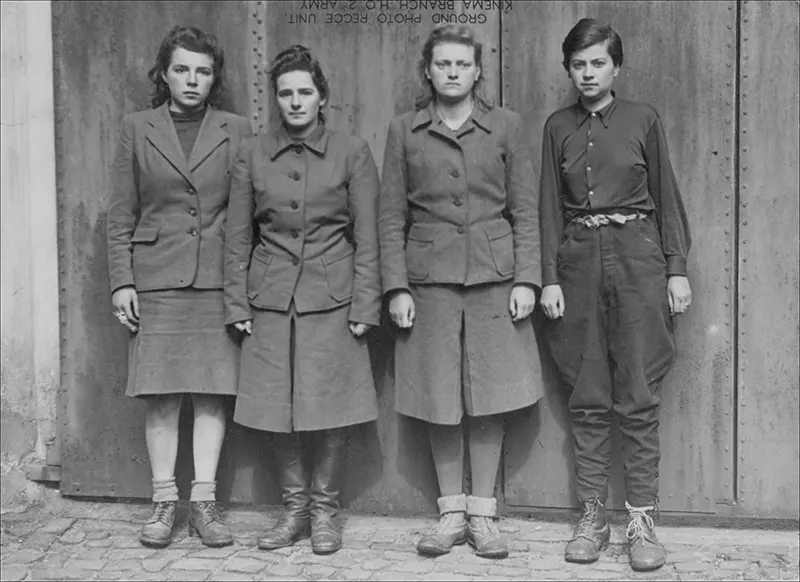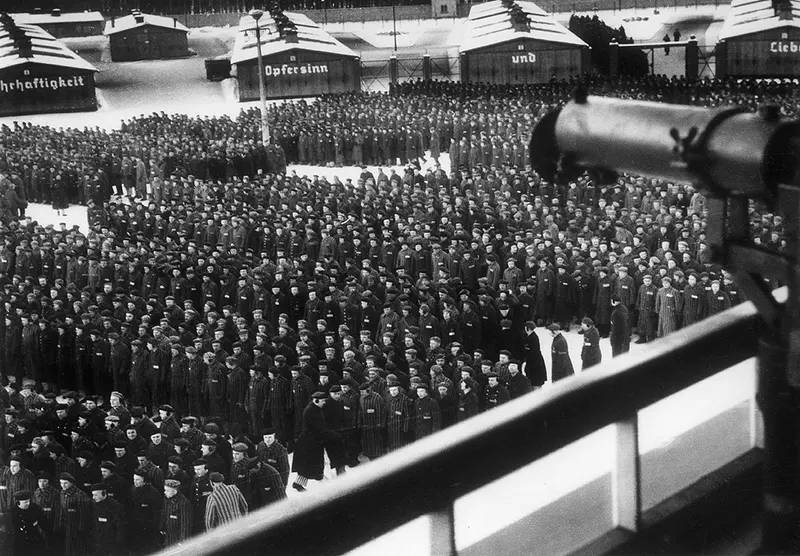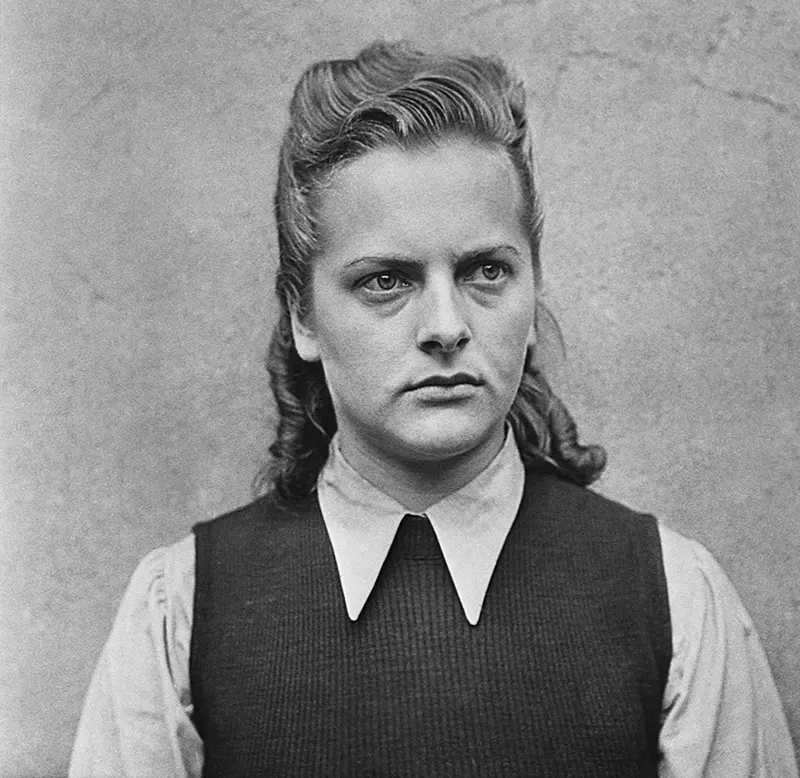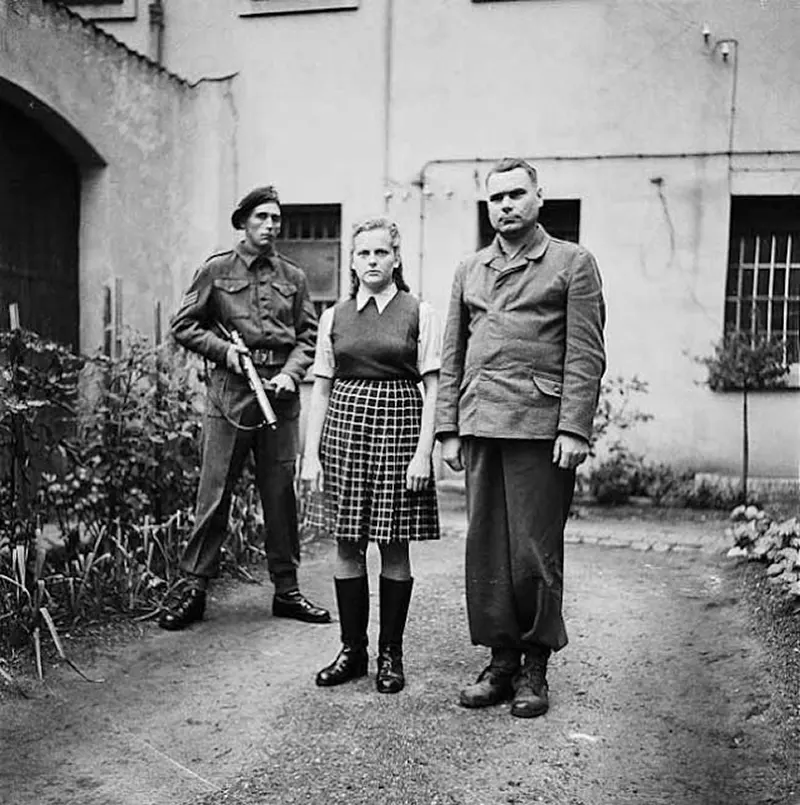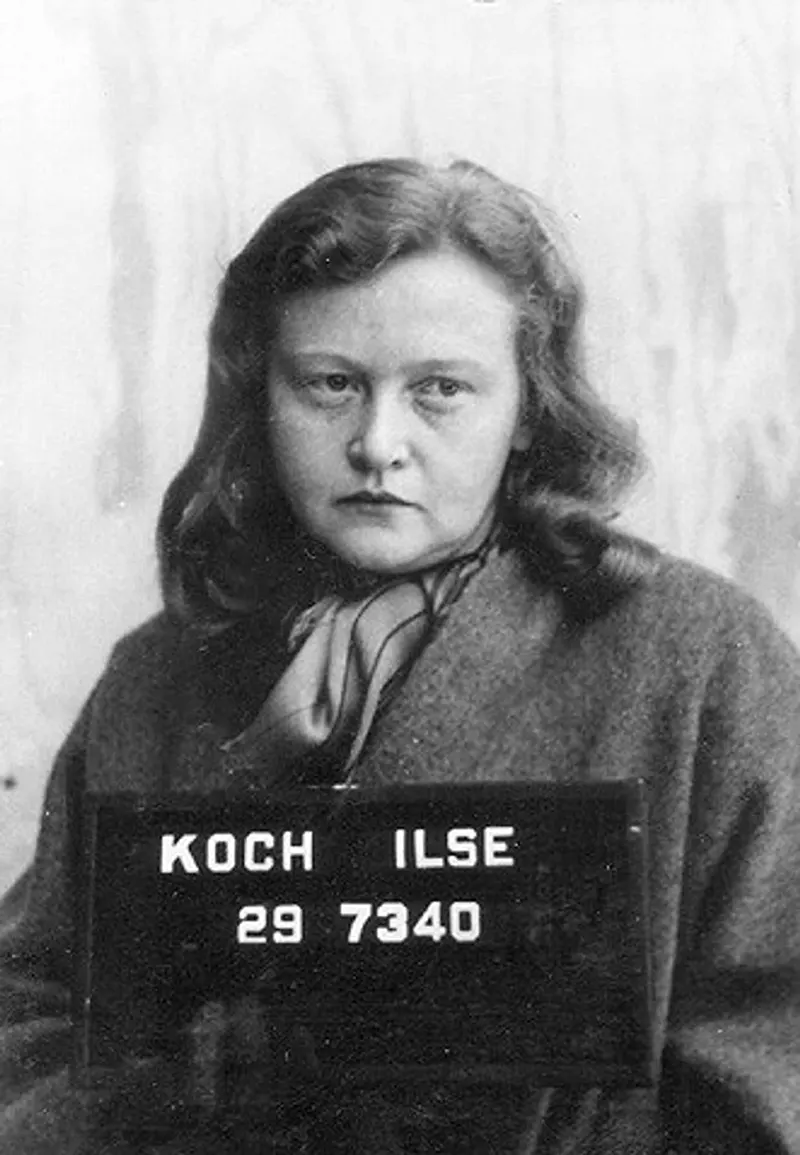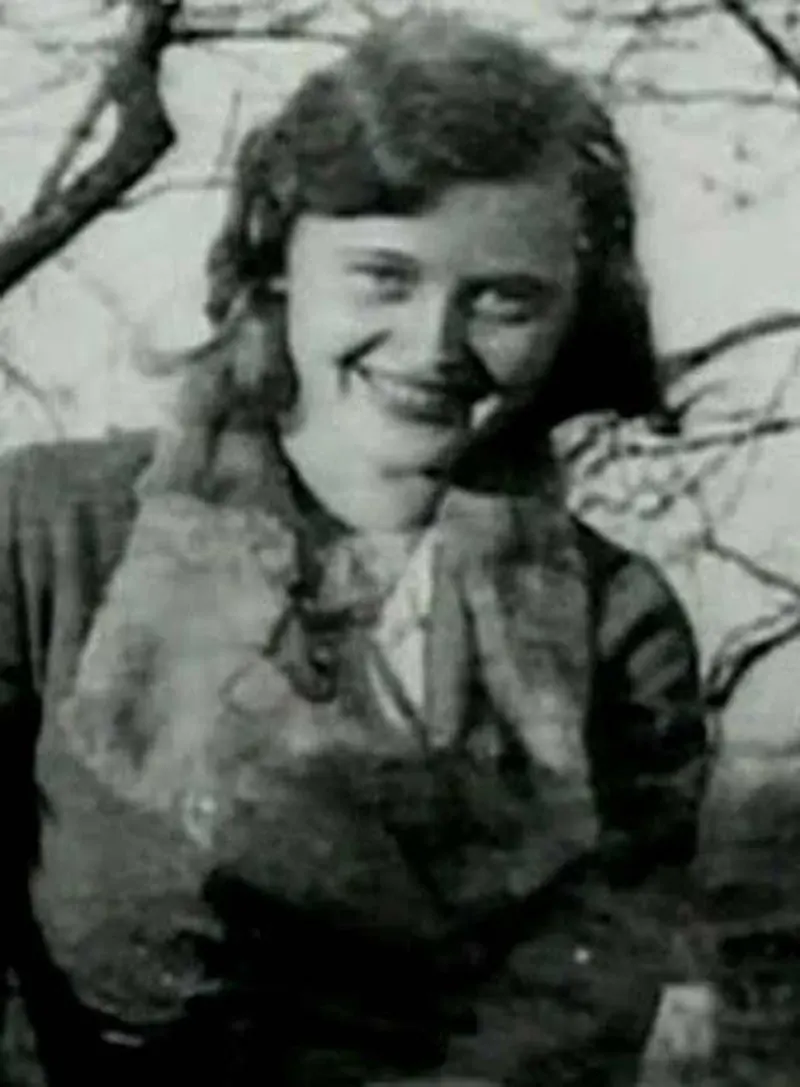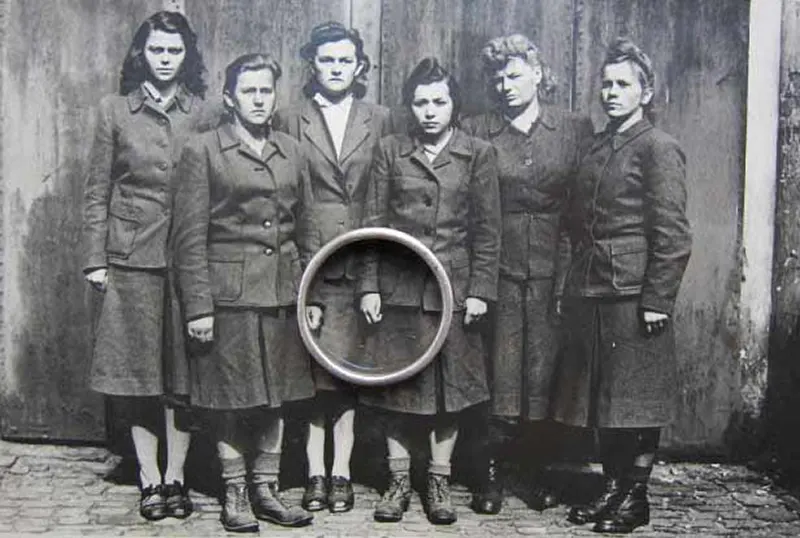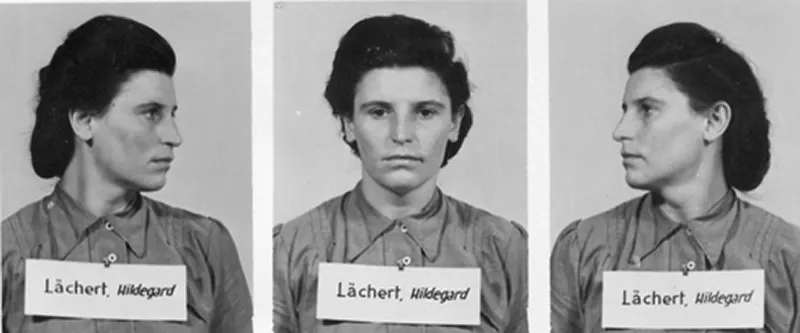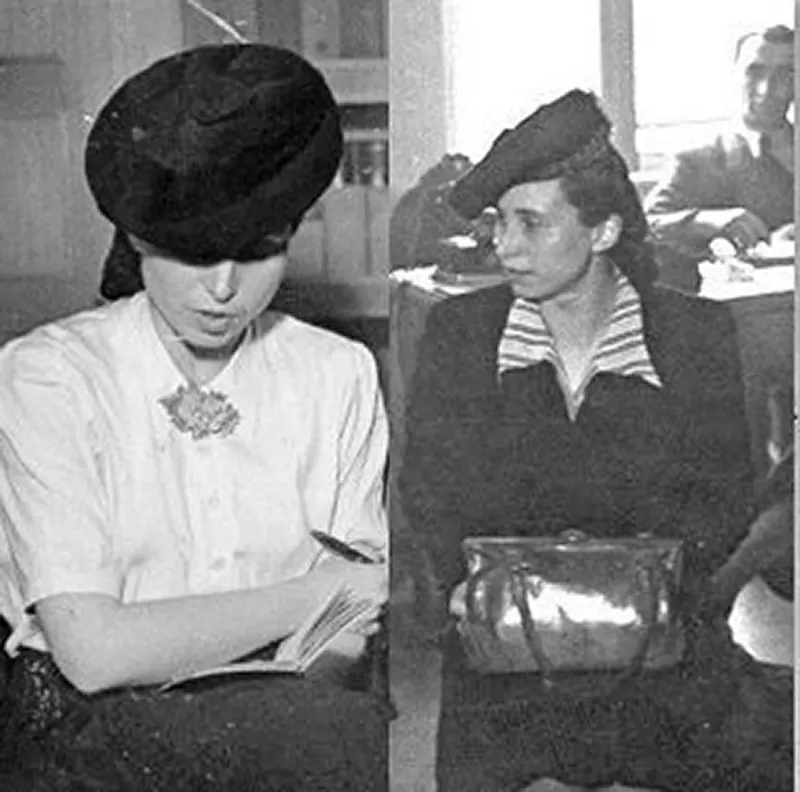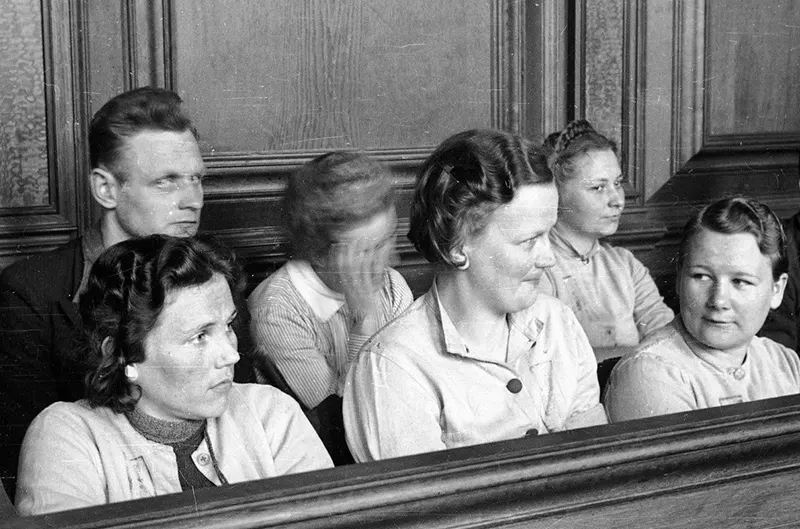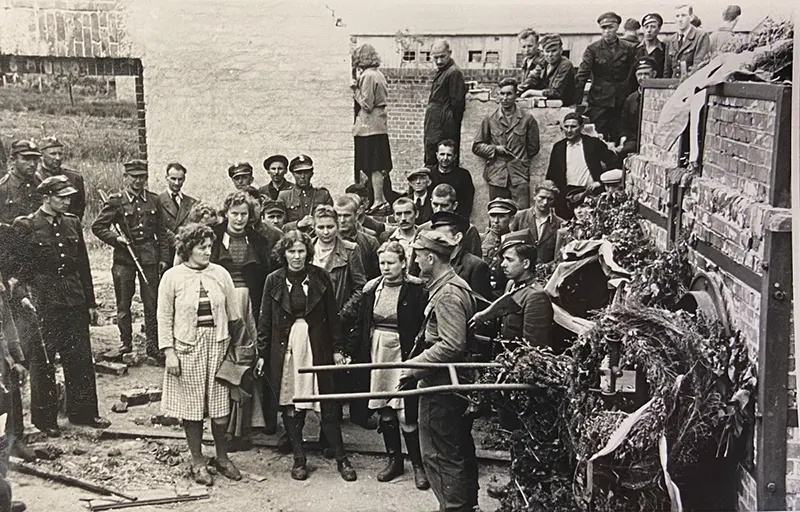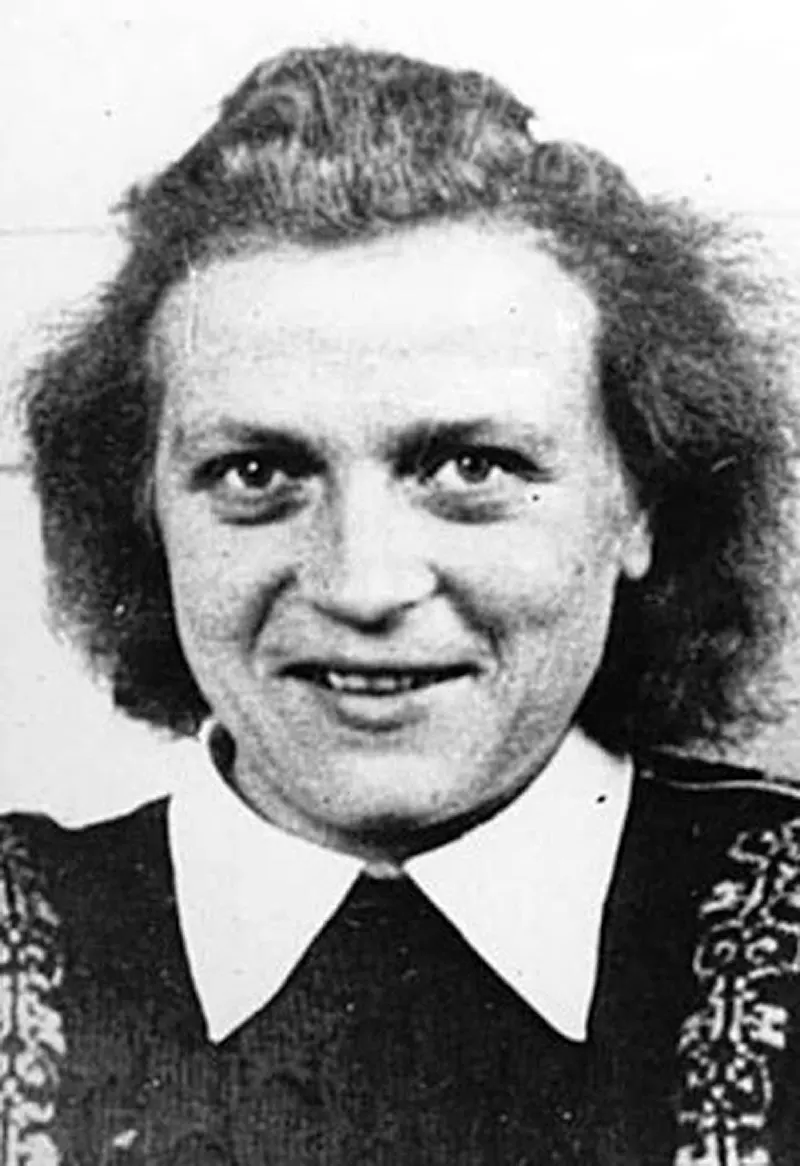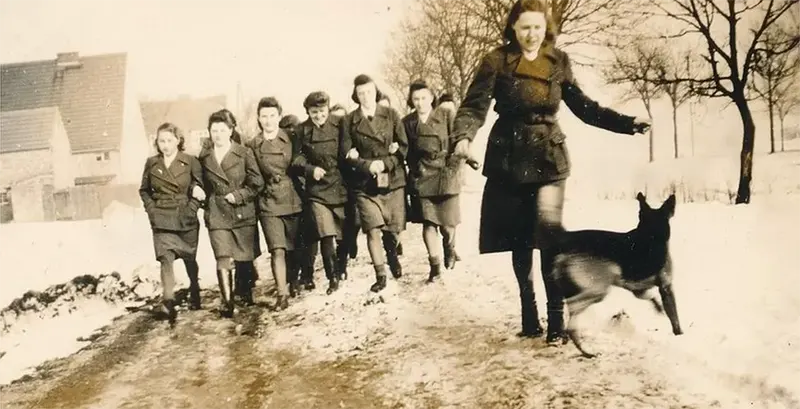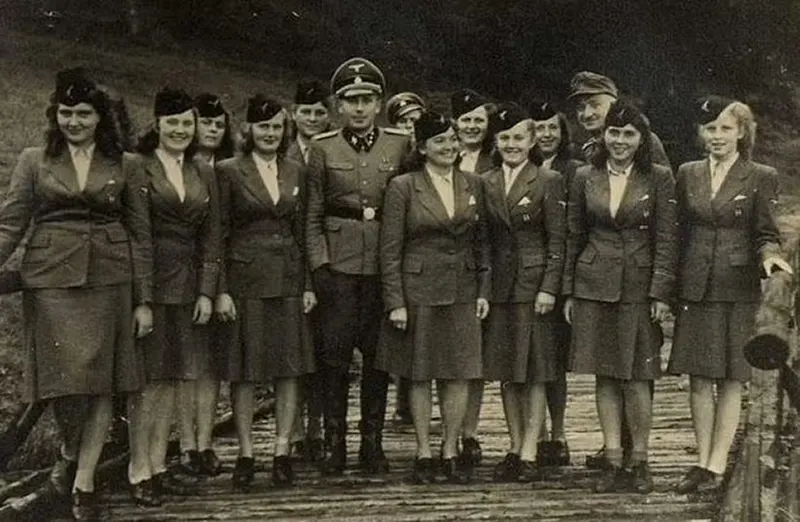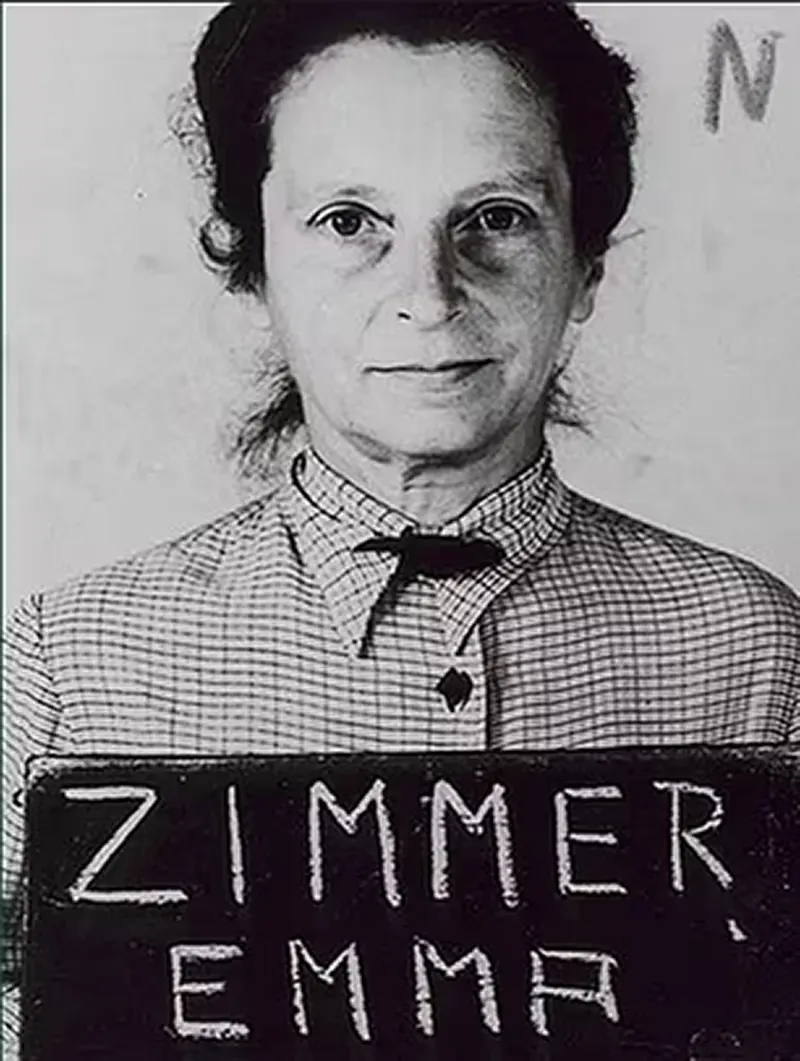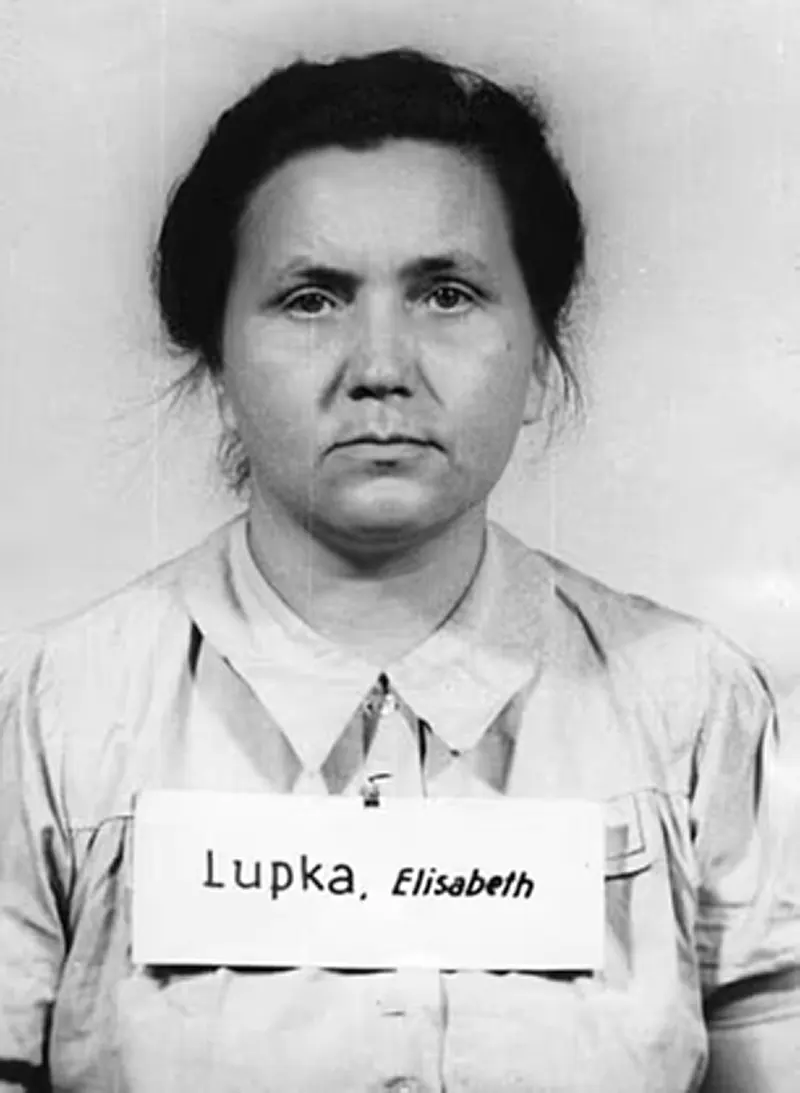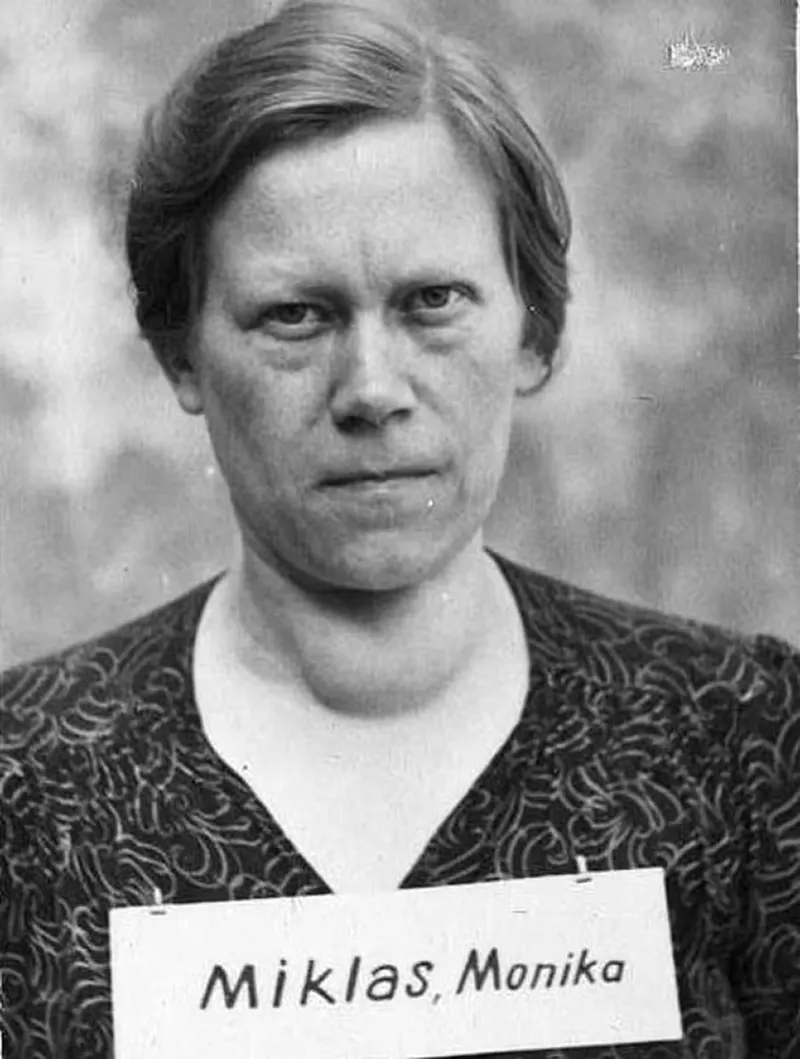While much attention has been paid to the role of male guards in perpetrating these atrocities, the role of female guards in these camps has often been overlooked. These women were tasked with enforcing the strict rules and regulations of the concentration camps, but they also played a crucial role in the torture, abuse, and murder of countless prisoners. The psychology of these female guards is a complex and troubling subject. Some researchers believe that they were driven by a desire for power and control, as well as a sense of loyalty to the Nazi cause. Others suggest that they may have been suffering from a variety of mental health issues, such as sadism or sociopathy, which made them more prone to committing acts of violence and cruelty. Despite their apparent disregard for human life and the immense suffering they inflicted on others, many of these female guards were able to escape punishment after the war ended. Some went into hiding, while others were able to blend in with the general population. However, a small number were tried and convicted of war crimes, with some receiving life sentences or even the death penalty. Of the 50,000 guards who served in the concentration camps, approximately 5,000 were women. In 1942, the first female guards arrived at Auschwitz and Majdanek from Ravensbrück. The year after, the Nazis began conscripting women because of a shortage of male guards. In the context of these camps, the German position title of Aufseherin translates to (female) “overseer” or “attendant”. Female guards were generally from the lower to middle class and had no relevant work experience; their occupational background varied: one source mentions former matrons, hairdressers, tramcar-conductresses, opera singers or retired teachers. Volunteers were recruited via advertisements in German newspapers asking for women to show their love for the Reich and join the SS-Gefolge (“SS-Retinue”, a Schutzstaffel (SS) support and service organization for women). Additionally, some were conscripted based on data in their SS files. Adolescent enrollment in the League of German Girls acted as a vehicle of indoctrination for many of the women. At one of the post-war hearings, Oberaufseherin Herta Haase-Breitmann-Schmidt, head female overseer, claimed that her female guards were not full-fledged SS women. Consequently, at some tribunals it was disputed whether SS-Helferinnen employed at the camps were official members of the SS, thus leading to conflicting court decisions. Many of them belonged to the Waffen-SS and to the SS-Helferinnen Corps. Relations between SS men and female guards are said to have existed in many of the camps, and Heinrich Himmler had told the SS men to regard the female guards as equals and comrades. At the relatively small Helmbrechts subcamp near Hof, Germany, the camp commandant, Wilhelm Dörr, openly pursued a sexual relationship with the head female overseer Herta Haase-Breitmann-Schmidt. Corruption was another aspect of the female guard culture. Ilse Koch, known as “The Witch of Buchenwald”, was married to the camp commandant, Karl Koch. Both were rumored to have embezzled millions of Reichsmark, for which Karl Koch was convicted and executed by the Nazis a few weeks before Buchenwald was liberated by the U.S. Army. One apparent exception to the brutal female overseer prototype was Klara Kunig, a camp guard in 1944 who served at Ravensbrück and its subcamp at Dresden-Universelle. The head wardress at the camp pointed out that she was too polite and too kind towards the inmates, resulting in her subsequent dismissal from camp duty in January 1945. Her fate has been unknown since 13 February 1945, the date of the allied firebombing of Dresden. Irmgard Ilse Ida Grese (7 October 1923 – 13 December 1945) was a Nazi concentration camp guard at Ravensbrück and Auschwitz, and served as warden of the women’s section of Bergen-Belsen. She was a volunteer member of the SS. By her teenage years, Grese, wanted to join the League of German Girls (Bund Deutscher Mädel), the branch of the Hitler Youth for girls, but her father forbade it. Before her 17th birthday, she moved to the SS Female Helpers’ training base, which was located near Ravensbrück, the all-female concentration camp. In 1940, she became an Aufseherin (guard or overseer) at Ravensbrück, and transferred to Auschwitz-Birkenau in March 1943. Due to her transfer, Grese had a falling out with her father the same year, as he had been vehemently opposed to her joining the SS-Gefolge. He expelled her from his house. Grese participated in prisoner selections for the gas chambers at Auschwitz. In early 1945, Grese accompanied a prisoner evacuation transport from Auschwitz to Ravensbrück. In March, she went to Bergen-Belsen, along with a large number of prisoners from Ravensbrück. Grese was captured by the British Army on 17 April 1945, with other SS personnel who did not flee. Grese was among the 45 people accused of war crimes at the Belsen Trial which was held in Lüneburg, Lower Saxony. During the trial, the press labeled Grese as “the Beautiful Beast” alongside former SS-Hauptsturmführer Josef Kramer (“the Beast of Belsen”), the former commandant at Birkenau. After a nine-week trial, Grese was sentenced to death by hanging. Although the charges against some of the other female warders (a total of 16 were charged) were as serious as those against Grese, she was one of only three female guards to be sentenced to death. Grese and two other concentration camp workers, Johanna Bormann and Elisabeth Volkenrath, were convicted, along with eight men, for crimes committed at Auschwitz and Belsen, and sentenced to death. As the verdicts were read, Grese was the only prisoner to remain defiant. Her subsequent appeal was rejected. According to Wendy Adele-Marie Sarti, the night before her execution, Grese sang Nazi songs until the early hours of the morning with Johanna Bormann. On 13 December 1945, in Hamelin Prison, Grese was led to the gallows. The women were executed individually by long-drop hanging and then the men in pairs. Ilse Koch, also known as the “Witch of Buchenwald,” was one of the most notorious female war criminals of the Nazi regime. Koch was born in Dresden, Germany in 1906 and went on to marry Karl Koch, the commandant of the Buchenwald concentration camp. As the wife of a high-ranking SS officer, Koch wielded a significant amount of power and was known for her sadistic treatment of prisoners. Koch was particularly obsessed with collecting human skin, which she used to make lampshades, book covers, and other household items. She was also known to have ordered the tattooing of prisoners’ skin to add to her collection. Koch’s sadistic behavior did not stop at her collection of human skin. She was also known to have participated in the torture and murder of prisoners, including children. Her actions were so heinous that even other SS officers found her behavior repulsive and questioned her sanity. After the war, Koch was arrested by American authorities and put on trial for war crimes. She was ultimately convicted and sentenced to life in prison, but the case was controversial due to the lack of concrete evidence linking her to specific crimes. There were also rumors that Koch had been protected by higher-ranking SS officers who were afraid of what she might reveal about their own crimes. Ilse and Karl Koch had one son and two daughters. Their son committed suicide after the war “because he couldn’t live with the shame of the crimes of his parents.” Another son, Uwe, conceived in her prison cell at Dachau with a fellow German prisoner, was born in the Aichach prison near Dachau where Koch was sent to serve her life sentence and was immediately taken from her. At the age of 19, Uwe Köhler learned that Koch was his mother and began visiting her regularly at Aichach. Koch hanged herself at Aichach women’s prison on 1 September 1967 at age 60. She experienced delusions and had become convinced that concentration camp survivors would abuse her in her cell. Maria Mandl (also spelled Mandel; 10 January 1912 – 24 January 1948) was an Austrian SS-Helferin (“SS helper”) known for her role in the Holocaust as a top-ranking official at the Auschwitz-Birkenau extermination camp, where she is believed to have been directly complicit in the deaths of over 500,000 prisoners. She was executed for war crimes. According to some accounts, Mandl often stood at the gate into Birkenau waiting for an inmate to turn and look at her: any who did were taken out of the lines and never heard from again. At Auschwitz, Mandl was known as The Beast, and for the next two years, she participated in selections for death and other documented abuses. The following is a firsthand account of Mandl’s treatment of prisoners upon arrival to Auschwitz, provided by Jewish Prisoner Sala Feder on December 1, 1947 to the District Court in Kraków. In August 1943 I was deported together with my family (27 people, including nine children aged from one month to eleven years) from the ghetto in Środula near Sosnowiec to Auschwitz, in a transport numbering some 5,000 people. At the ramp in Birkenau, the transport was awaited by the defendant Mandl accompanied by SS woman Margot Dreschel, and as soon as the transport had arrived, Mandl carried out a selection, sending approximately 90 percent of the transport to the cars which transported these people to the nearby crematorium. […] During these selections, defendant Mandl tortured the prisoners in a cruel way, beating the women, the men and the children with a whip and kicking them blindly. She would tear the children from the arms of their mothers, and when the mothers tried to come near the children and defend them, Mandl would beat the mothers horribly and kick them. I saw – right next to me – a young, 20-year-old mother, who tried to go near her two-year-old child thrown onto the car, and Mandl kicked and beat her so cruelly that she didn’t get up any more. […] I held my four-year-old child by the hand. The defendant Mandl approached me, tore my child away from me and threw the child onto a still empty car so that the child got wounded in the face and began to cry and call me, but I was put aside to the group that wasn’t loaded onto the cars. When I tried to reach the child, crying in the car, Mandl began to beat me so cruelly that I fell. Mandl continued to kick me although I was lying on the ground, and she knocked out almost all of my teeth with her shoe. Herta Bothe (3 January 1921 – 16 March 2000) was a German concentration camp guard during World War II. She was imprisoned for war crimes after the defeat of Nazi Germany, and was subsequently released early from prison on 22 December 1951. She is said to have been the tallest woman arrested; she was 6′ 3″ (1.91 m) in height. Bothe also stood out from other Aufseherinnen because, while most of the SS women wore black jackboots, she was in ordinary civilian shoes. The Allied soldiers forced her to place corpses of dead prisoners into mass graves adjacent to the main camp. She recalled in an interview some sixty years later that, while carrying the corpses, they were not allowed to wear gloves, and she was terrified of contracting typhus. She said the dead bodies were so rotten that the arms and legs tore away when they were moved. She also recalled the emaciated bodies were still heavy enough to cause her considerable back pain. Bothe was arrested and taken to a prison at Celle. At the Belsen Trial she was characterized as a “ruthless overseer” and sentenced to ten years in prison for using a pistol on prisoners. Bothe admitted to striking inmates with her hands for camp violations like stealing but maintained that she never beat anyone “with a stick or a rod” and added that she never “killed anyone.” Her contention of innocence was deemed questionable as one Bergen-Belsen survivor claimed to have witnessed Bothe beat a Hungarian Jew named Éva to death with a wooden block while another teenager stated that he saw her shoot two prisoners for reasons he could not understand. Nevertheless, she was released early from prison. Herta Ehlert (1914-1997) was a German SS guard and supervisor at several Nazi concentration camps during World War II, including Ravensbrück and Auschwitz-Birkenau. She was known for her brutality and involvement in the selection and execution of prisoners. After the war, Ehlert was arrested and tried for war crimes, ultimately being sentenced to life imprisonment in 1949. She was released on parole in 1954 and lived a relatively quiet life until her death in 1997. Greta Bösel was a guard at the women’s camp, Ravensbrück. A trained nurse, she served as Arbeitseinsatzführerin (Work Input Overseer), which involved, among other things, selecting the women for the gas chamber. Greta is remembered for her aphorism, “If they can’t work, let them rot.” Tried and convicted at the first Ravensbrück Trial, the court found Greta guilty. The Allies hanged her on 3 May 1947 at Hameln prison along with others. Hildegard Lächert was nicknamed “Bloody Brigitte” (Krwawa Brygida in Polish). Many witnesses characterized her as the “worst” or “the cruelest” Aufseherin, as “Beast,” and as “Fright of the Prisoners.” For her part in selections to the gas chamber, releasing her dog onto inmates, and her overall abuse, the court sentenced her to 12 years imprisonment. Hildegard Lächert died in 1995 in Berlin, aged 75. Jenny-Wanda Barkmann (30 May 1922 – 4 July 1946) was a German overseer in Nazi concentration camps during World War II. In 1944, she became an Aufseherin, or overseer, in the Stutthof SK-III women’s subcamp, where she brutalized prisoners, some to death. She also selected women and children for the gas chambers. She was so merciless that the women prisoners nicknamed her the “Beautiful Specter”. Barkmann fled Stutthof as the Soviet Red Army approached. She was arrested in May 1945 while trying to leave a train station in Gdańsk. She became a defendant in the first Stutthof Trial, where she and other defendants were convicted for their crimes at the camp. Barkmann is said to have giggled through the trial, flirted with her prison guards; she was apparently seen arranging her hair while hearing testimony. She was found guilty, after which she declared, “Life is indeed a pleasure, and pleasures are usually short.” Barkmann was publicly executed by short-drop hanging along with 10 other defendants from the trial on Biskupia Górka Hill near Gdańsk on 4 July 1946. She was 24 years old, and the first to be hanged. The Stutthof trials were a series of war crime tribunals held in postwar Poland for the prosecution of Stutthof concentration camp staff and officials, responsible for the murder of up to 85,000 prisoners during the occupation of Poland by Nazi Germany in World War II. Stutthof was liberated by the Soviets on May 10th, 1945. Commandant Johann Pauls and staff were put on trial by the Polish Special Law Court at Danzig between April 25th and May 31st, 1946. Five women and six men were found guilty of war crimes and sentenced to death. Johann Pauls, SS-Aufseherins Jenny Wanda Barkmann, Elisabeth Becker, Wanda Klaff, Ewa Paradies, Gerda Steinhoff, and five other men. They pleaded “not guilty” and the women did not seem to take the trial seriously until the end. Johanna Altvater was born in Germany in 1920. In 1942, she arrived in the Vladimir-Volynsky region of Ukraine to work as the secretary of Nazi Party district leader Wilhelm Westerheide. After the war, she was accused of having held a Jewish boy by his legs and killed the child by swinging his head into a wall in a ghetto. She was also accused of throwing Jewish children out of a third-floor window of a hospital and then dispatching staff to go out to the pavement to ensure all the children were dead. After the war, she became married and took on her husband’s surname of Zelle. She served as a welfare worker for some time but was ultimately brought to court together with her former superior Westerheide. They were ultimately acquitted in a lower court in 1979 and were again acquitted in a higher court in Dec 1982, both times due to contradictory testimonies and general lack of evidence. (Photo credit: Wikimedia Commons / US Army Archives / Bundesarchiv / British Archives / James Bjorkman WW2 Blog / Flickr). Notify me of new posts by email.
Δ Subscribe

